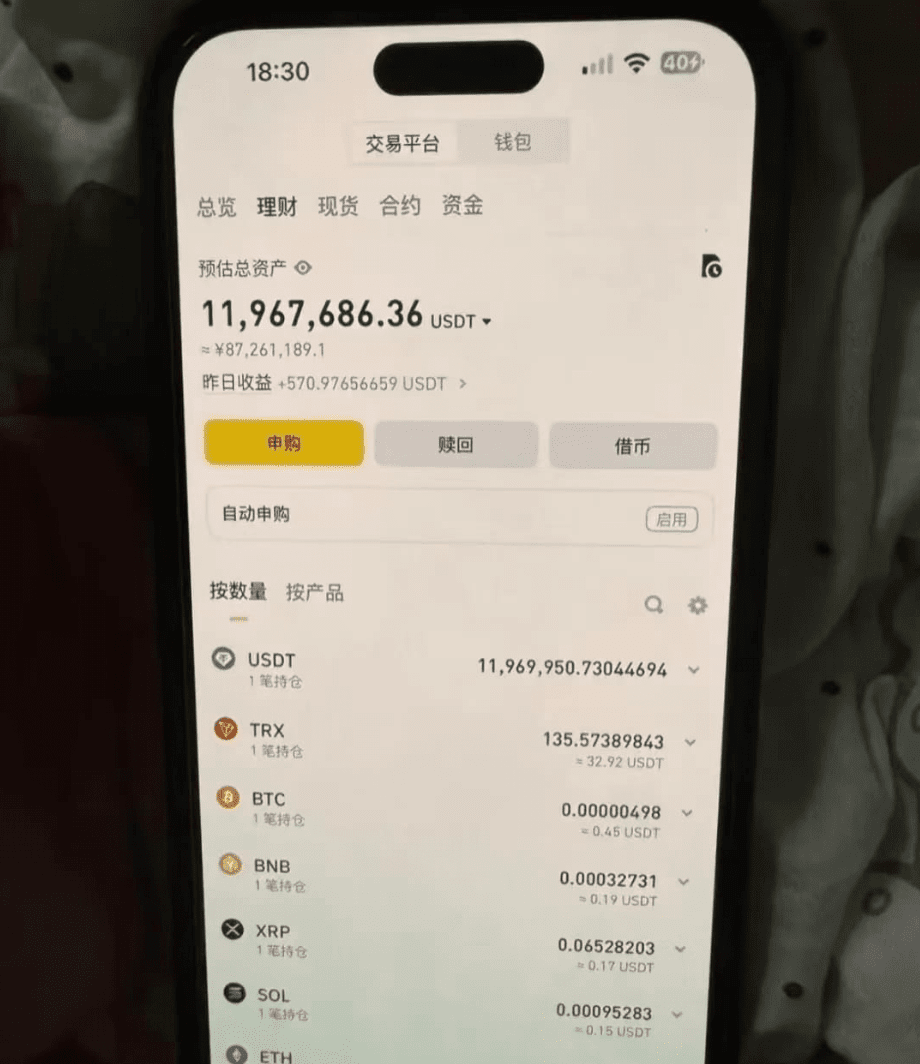
In 2014, the winter nights in Beijing were particularly cold. I sat on the edge of my rental bed, staring at the red numbers showing a loss of 860,000 in my account, unable to sleep all night. That year, I invested all my seven years of savings and borrowed money from friends and family into Bitcoin. After a wild surge and a crash, my dreams shattered, and debts were born.
Ten years later, when my assets reach eight digits, I did not cheer. Instead, I became more certain of one thing: this is not luck; it is the price of survival.
Today, I want to share the 'survival rules' I have refined over the past decade. These are not wealth secrets but six truths that can save your life.
Truth One: Those who follow the trend survive, those against it perish.
I used to love 'catching the bottom' but often ended up 'catching the gates of hell'.
On the day BTC plummeted from $20,000 in 2017, I blindly increased my position, losing 230,000 in a single day, nearly facing liquidation.
Later, I established a trading principle: only trade in upward trends; staying out of the market is also a position.
✅ My entry iron rule:
• The coin price must stabilize above the 30-day moving average for three days;
• After a sharp decline, entering the market requires three conditions to be met at the same time:
• Trading volume shrinks to below 40% of the 30-day average;
• Net inflows of stablecoins continue to rise, with weekly growth > 15%;
• The funding rate for contracts shifts from positive to negative, indicating a clear market panic.
Case retrospective:
On the 11th day after LUNA crashed, BTC volume contracted + stablecoins surged + funding rates turned negative, leading to a rebound of over 127% three months after buying. It was not 'catching the bottom' but 'going with the flow'.
Truth Two: Stop loss is about survival, not giving up.
You can tolerate a 30% loss in one go, but it's hard to accept losing 3% ten times in a row. This is not a psychological problem; it's a funding structure that cannot bear it.
Many traders do not lose due to judgment but due to an unwillingness to admit mistakes.
✅ My three stop-loss defense lines:
1. Time stop loss: If there's no profit indication after holding for 24 hours, exit immediately;
2. Spatial Stop Loss: If floating losses exceed 3% of the principal, implement a forced stop loss without hesitation;
3. Emotional Stop Loss: After two consecutive misjudgments, take a break for three days to avoid emotional trading.
Classic battles:
On 'Black Thursday' in March 2020, I set stop-loss orders in advance, avoiding a 40% crash in a single day.
Truth Three: Understand 'volume-price action', see through the thoughts of the main forces.
The crypto space is never short of believers, but what it lacks are people who understand where the money flows.
Price movements aren't reliant on words, nor are they driven by emotions; every fluctuation has a traceable reason behind it.
✅ Main force action identification technique:
Entry signals:
• When the breakout occurs, trading volume reaches three times the 30-day average;
• Frequent large on-chain transfers;
• Net outflow of USDT from exchanges continues for more than three days.
Risk signals:
• The price sets a new high, but trading volume 'lags behind';
• Borrowing rates decline sharply, and chip concentration increases.
Practical review:
In 2021, ETH continuously set new highs, but volume shrank daily, allowing me to exit early and avoid nearly a 60% deep drawdown later.
Truth Four: Opportunities are given to those who wait, not to those who buy randomly.
In a bull market, there is no shortage of price increases, but what is lacking is your confidence in holding coins that can multiply several times.
I only trade 'pullback + reversal' structures that I understand. Waiting is not doing nothing; it is building momentum.
✅ Four-factor model to judge 'rebound critical points':
1. The correction from historical highs exceeds 30%;
2. The 120-day moving average is flat;
3. Weekly RSI falls back to the 40-50 range;
4. The perpetual contract open interest reaches a three-month low.
Classic opportunities:
After SOL halved in 2023 and approached the 120-day moving average, I decisively built a position. The price then increased more than five times in the following five months.
Truth Five: Filter out quality targets, refuse to waste energy on 'zombie coins'.
A coin with no volatility, no trading volume, and no popularity is equivalent to having no future.
✅ My coin management mechanism:
• Eliminate assets with 5-day volatility below 3%;
• Remove coins that have dropped more than 10 places in market cap rankings from your watchlist permanently;
• Update the target pool monthly, keeping the coin activity within 15%.
Energy is limited; focusing on a few strong coins is worth more than anything else.
In 2024, I eliminated 87% of underperforming coins, leaving only 13% core assets, boosting account returns by 70%.
Truth Six: Let the principal outpace time and grow through compound interest.
You can't become successful overnight; relying on liquidation for a comeback will only trap you deeper.
Real reversal starts with capital discipline.
✅ My compound interest rules:
• Each investment should not exceed 20% of the total principal;
• Take back costs when a single profit reaches 10%;
• Set a 3% trailing stop for remaining profits to capture trends while controlling risk.
Speak with mathematics:
As long as the monthly average yield is 15%, the three-year compound return is 100 times.
Epilogue: It is not the smartest who survive, but those who follow the rules and do not die.
Over the past decade, I have witnessed countless tech geniuses and short-term trading prodigies perish in the market.
And what truly remains are those who execute simple rules + conduct continuous reviews + respect the market, the 'honest people'.
To this day, I still have three habits:
• Every morning, browse on-chain data and fund flows;
• Review trading mistakes three times a week;
• Review the strategy logic once a month to ensure its effectiveness.
If you are struggling, remember:
1. Print out your worst-performing trades, line by line, and compare them with this article;
2. From the next trade, limit the loss per trade to no more than 3% of the principal;
3. Do not enter with a full position; keep six months' living expenses aside first.
The end of the crypto world is not about becoming rich, but about staying sober.
Don’t chase the 'next doubling candlestick'; think about — can I survive for another ten years?
In the crypto world, making a million can be achieved in three ways: either rely on a major bull market and hold on, bet on the right coin to get rich, or use high leverage to bet in the right direction. But most people end up losing money, so don’t just look at get-rich stories; first, consider how much risk you can bear. If you're also a tech-savvy person in the crypto space, check out the coin homepage.
Click on my profile to follow me for the latest information and in-depth analysis!
Essential for trading cryptocurrencies: A complete revelation of the double top reversal chart pattern trading strategy: teaching you how to accurately capture major market reversals!
The double top chart pattern trading strategy is a powerful tool suitable for traders looking to seize market reversal opportunities. This strategy is built on a simple yet effective chart pattern, appreciated by traders for its ability to accurately predict potential downward price trends.
By focusing on the formation of two obvious peaks, traders can identify critical entry and exit points, thus optimizing their decision-making process. This method combines technical analysis with a clear, structured approach, making it easy for both beginners and experienced traders to grasp.
Similar to the triple top pattern, the double top chart pattern is also a classic bearish reversal pattern that can be seen across almost all time frames. Typically, it appears when the price approaches a resistance level after a period of increase, preparing for a pullback, with the price hovering around a point similar to the previous volatility peak.
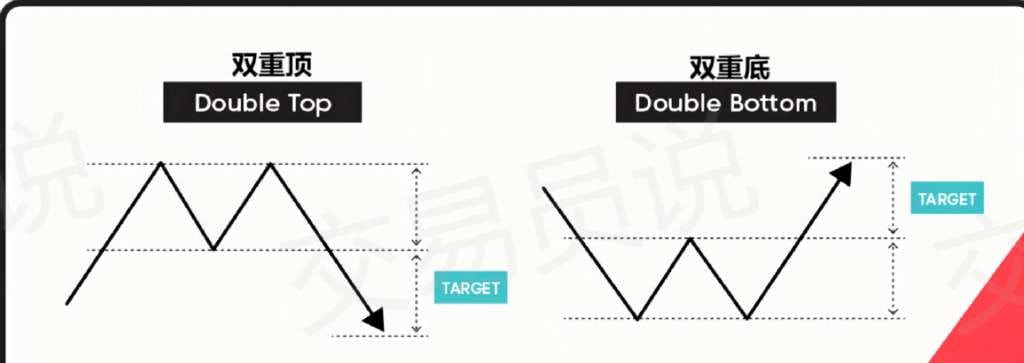
In contrast, the double bottom chart pattern (Double Bottoms Chart Pattern) is a bullish reversal pattern; simply put, a double bottom pattern signifies that the downtrend is about to end, and the price will rise.
The double top/double bottom chart pattern indicates that the upward or downward trend has lost momentum, with selling pressure increasing after the uptrend enters the overbought area, or buying pressure increasing after the downtrend is oversold.
Double top chart pattern strategy.
If you want to learn a profitable trading method, focus on the double top strategy. The double top chart pattern strategy employs simple and reliable trading principles.
If used properly, it can turn your trading results around. This is a very successful trading method applicable to any type of market. No matter what your trading style is, you can use this strategy on your preferred time frame.
As stated above, double top reversals are similar to triple top patterns. The only difference between them is the number of times the resistance level is retested.
It is estimated that over 95% of traders will incur losses. One of the reasons for this disadvantageous statistic for traders is that you have encountered the wrong trading methods. However, we plan to change this situation by revealing an unconventional double top reversal trading approach.
What is a double top reversal pattern?
The double top pattern is a bearish reversal trading model that appears at the end of an uptrend.
Moreover, the double top reversal consists of two consecutive peaks, which are approximately at the same high point. When the first peak forms, the uptrend encounters resistance, and then the price falls back until it finds the support level we call the 'neck line'.
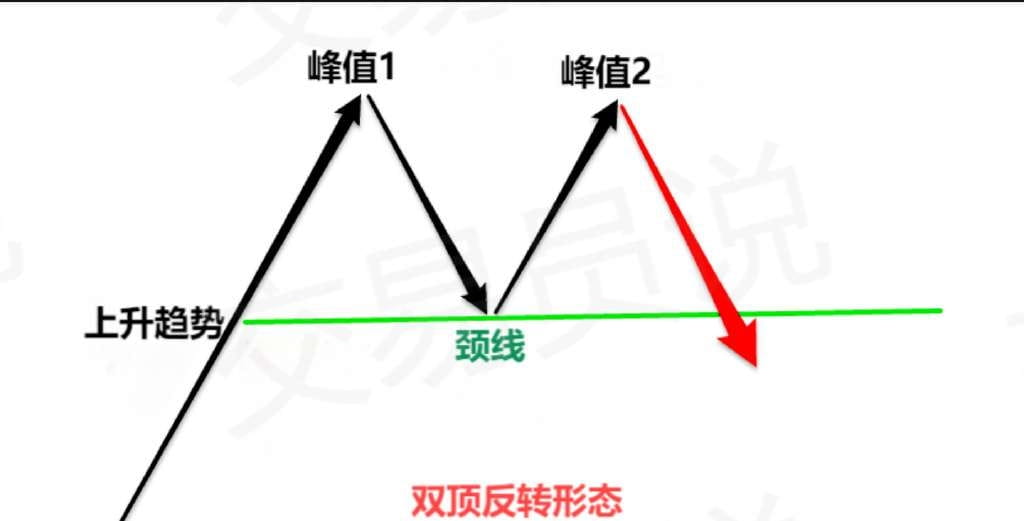
In the second phase, the price moves up again, approaching the resistance level formed by the first peak. However, the price fails to break this resistance level and falls back to the neck line.
One of the greatest traders on Wall Street, Jesse Livermore, once said that when trends change direction, these important turning points always make big money. We believe that the double top chart pattern strategy can help you achieve your profit targets.
The psychological mechanism behind the double top pattern.
The double top reversal pattern reflects the battle between bulls and bears. When the price is in an uptrend and forms the first peak, it indicates that the bullish power is starting to weaken.
After the first pullback, bulls attempt to push the price to a new high but fail to break the previous peak, as bears take control and push the price down.
Note: The double top reversal is only valid when a double top breakout occurs. The breakout we refer to is the neck line breakout.
Only when a double top breakout occurs will bulls concede defeat. This is clear evidence of a market trend reversal. Therefore, the double top reversal is confirmed when the neck line is broken.
Next, let's see how to effectively trade using the double top chart pattern strategy. You will learn to profit using 'naked charts'.
How to trade using the double top chart pattern strategy: Shorting rules.
We have found that the most successful trading strategies are those that utilize naked charts (naked candlesticks). Naked charts display prices only, providing a very clear representation of price without being cluttered by numerous technical indicators.
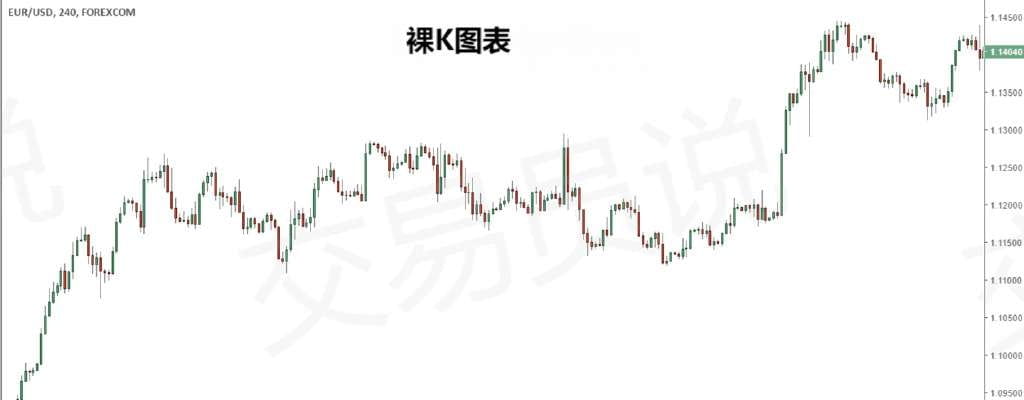
The double top chart pattern strategy is precisely your way to resolve messy charts.
When trading reversals, it is crucial to analyze the market in conjunction with the market phase and the chart pattern (i.e., double top reversal).
Step #1: Determine the market phase; double top reversals require an upward trend.
Just because you can spot a double top reversal does not mean you should blindly enter. Remember, we need the right background conditions; all factors must align to form the ideal double top reversal.
Therefore, the first step is to identify the market phase or market condition. At any given time, the market can be in an uptrend, downtrend, or sideways. As we previously determined, a double top reversal requires a preceding uptrend.
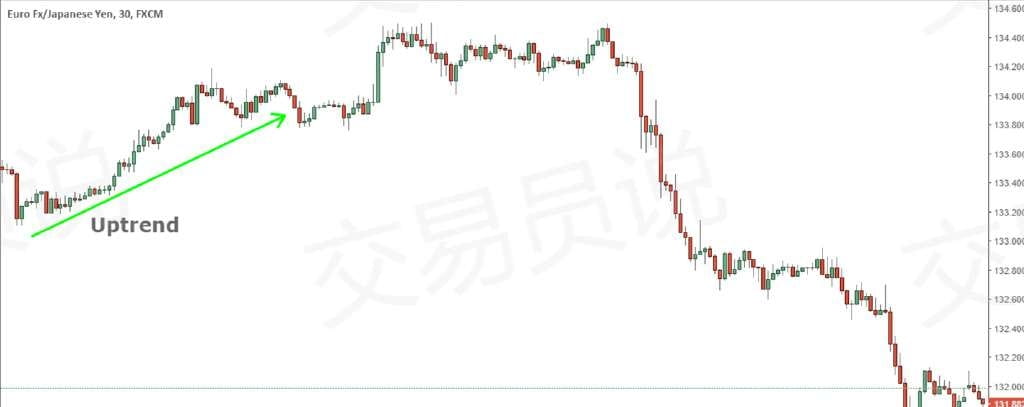
Since this is a reversal trading strategy, we first need a preceding trend. Otherwise, we may just be trading in a ranging market, which we want to avoid, especially when trading double top reversal patterns.
Step #2: The double top reversal consists of two rounded tops.
The second step of the double top chart pattern strategy is to find historical precedents or chart patterns. We do not want to make trading decisions without price confirmation. In our case, we use the double top reversal pattern.
To consider a double top breakout as tradable, you need to identify two rounded tops.
So, what is a rounded top?
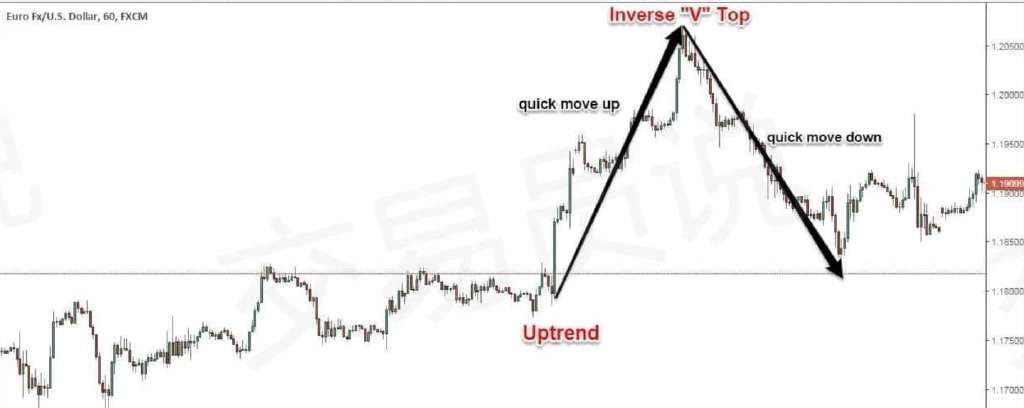
In technical analysis, a rounded top is simply a price pattern that typically appears after an uptrend. The price moves up first and then quickly falls back, forming a rounded top, sometimes presenting an inverted 'V' shape.
Of course, based on the structure of the double top reversal, the size and magnitude of the inverted 'V' top may vary. However, the key is that we need to see the price rise rapidly and then fall quickly, forming a rounded top.
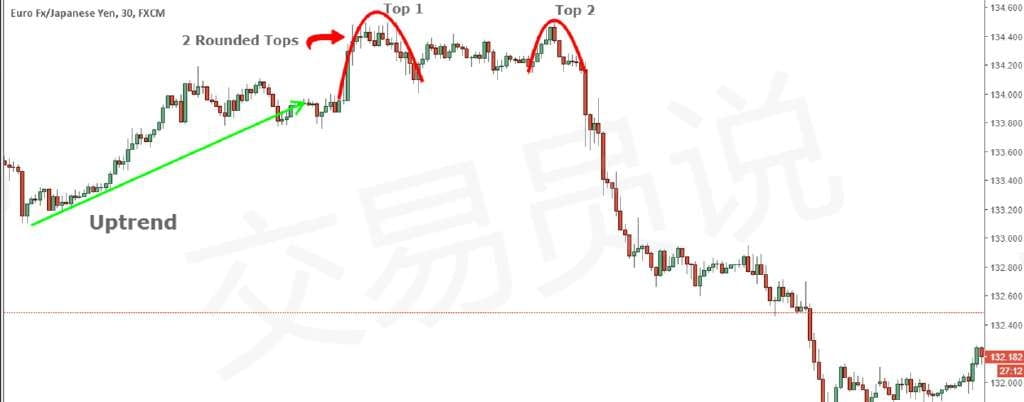
Note: An effective double top reversal must have two rounded tops.
Next, we will move on to the third criterion of the double top chart pattern strategy.
Step #3: Allow for a 10-point difference between the two tops.
As we mentioned earlier, do not pursue perfection, because in trading, you need to let go of the idealistic mindset; double top reversals will not always look perfect, so be flexible.
This is why we need to allow for a maximum of 10 points of difference between the two tops.
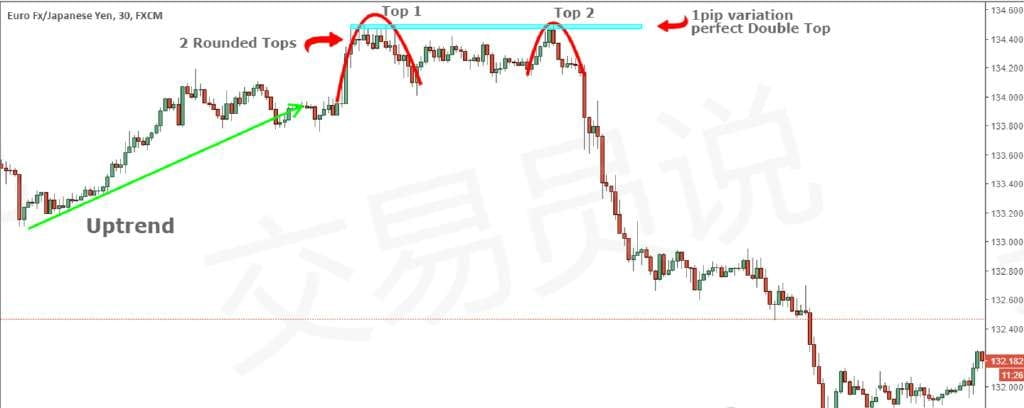
The likelihood of two tops appearing at the same price level is almost zero. You will find that two tops usually have slight differences, but they appear near the same price area.
More importantly, the closing price; if the position of the double top pattern is good, the closing price may align perfectly.
Next, we need to determine the entry techniques for the double top chart pattern strategy.
Step #4: Sell when the double top breakout candlestick closes below the neck line.
Once we identify the market phase and the characteristics of an ideal double top reversal, we need to wait for confirmation of momentum shift.
The double top breakout candlestick (K-line) is our signal indicating that momentum has changed; it is also the key to confirming and validating the double top pattern.
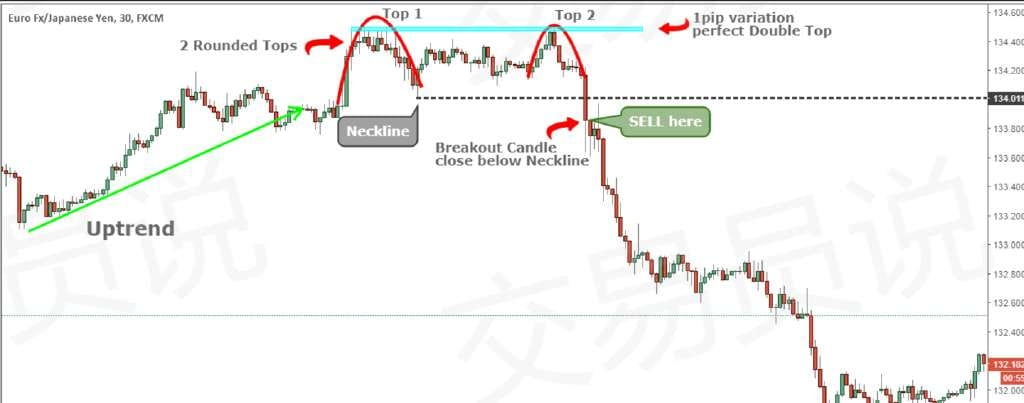
You will see double top breakouts occurring repeatedly, but they must be analyzed within the context of the market trend.
Next, we need to determine the profit location for the double top chart pattern strategy.
Step #5: Profit target equals 2 to 3 times the price distance from the highest point to the neck line.
The minimum profit target for the double top pattern is approximately equal to 2 to 3 times the price distance from the double top to the neck line.
If we project the same price distance downwards by 2 to 3 times, we can get the first profit zone of the double top chart pattern strategy.
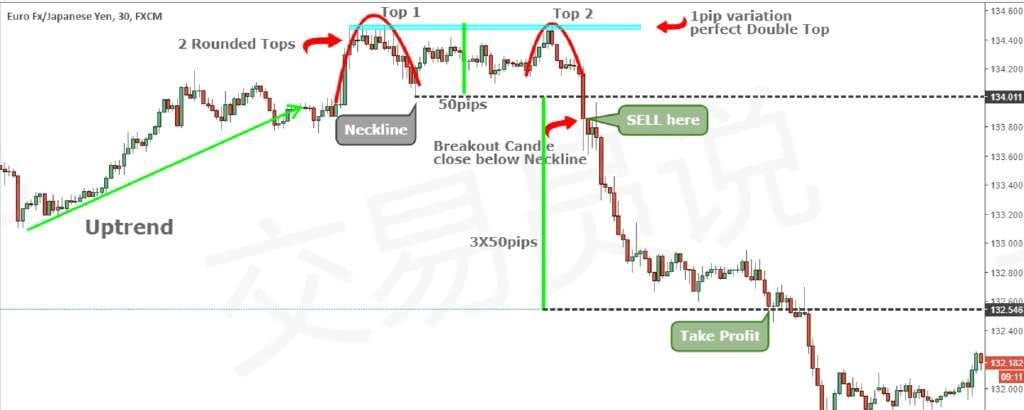
Since double top patterns can lead to significant reversals, we recommend staying flexible when setting profit targets to avoid missing any major profit opportunities.
Next, we need to determine the important aspect of setting the stop-loss position.
Step #6: Set protective stop losses just above the resistance level formed by the double top reversal.
The double top chart pattern strategy provides a simple way to quantify risk, as you can set a protective stop loss just above the resistance level of the double top pattern.
Additionally, the double top pattern also gives you the opportunity to use smaller stop losses, which is great because we always want to minimize losses.
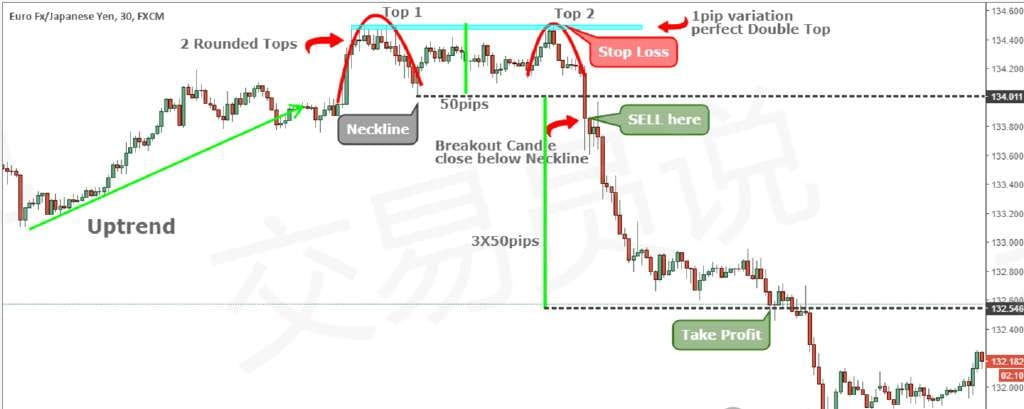
Note: The above is an example of a short trade. For buy trades, you can use the same rules in reverse. This time we will use the double bottom pattern. In the image below, you can see an actual double bottom pattern long trade example.
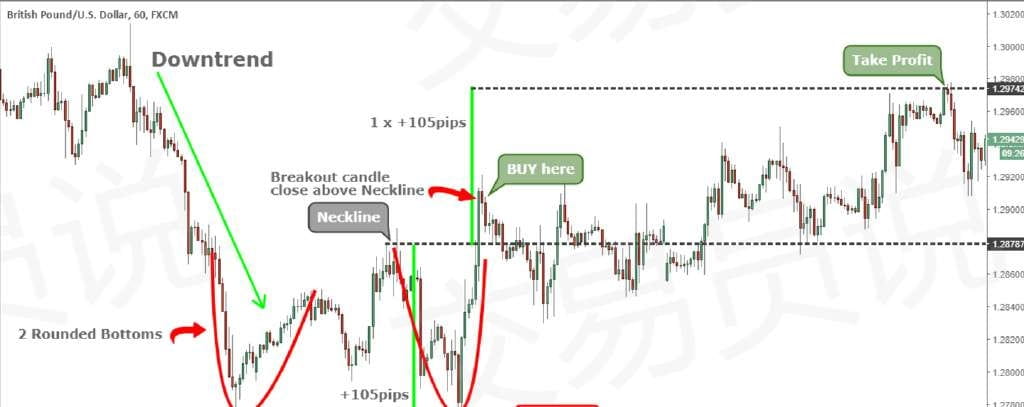
Summary.
Overall, the double top reversal is one of the most common chart patterns. The frequency of double top patterns and the significant selling opportunities they provide proves that price does not change randomly and that it can be exploited for substantial profits.
To trade double tops correctly, you need to implement some basic trading rules. The following steps will help you identify and trade double top (bottom) reversal patterns:
Step 1: Trend identification.
Step 2: Create the first top.
Step 3: Trend interruption.
Step 4: Create a range low.
Step 5: Create the second top.
Step 6: Draw the neck line.
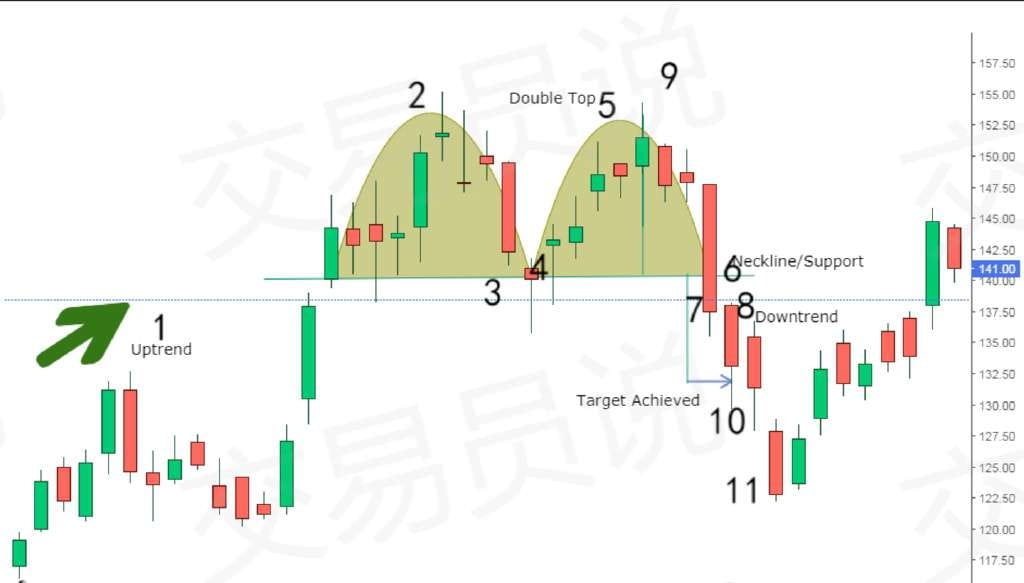
Step 7: Neck line breakout.
Step 8: Enter the trade.
Step 9: Set Stop Loss.
Step 10: Set Take Profit.
Step 11: Exit the trade.
As previously mentioned, the double top pattern (or double bottom) is the most common trading pattern on daily trading charts. In fact, the commonality of this pattern itself can prove that price action is not as random as some industry experts claim. Chart prices simply reflect traders' emotions; the double top or double bottom patterns indicate that both sides are temporarily testing the price extremes.
If price movements are random, why are there so many classic chart patterns? The answer is that 'most market participants have similar mindsets and decision-making methods.' If a certain price level (price pattern) is tested multiple times but fails to break, it gives traders more confidence, making them more convinced of the reliability of that price pattern.

As an 'old leek' who has been in the crypto space for several years, I will share eight tested methods today, without hype or pretense, focusing on authenticity.
1. Buy coins and hold them, regularly invest — the first choice for laid-back players.
Suitable for: Those who are too lazy to monitor and want to relax.
How to operate:
Directly register on major exchanges like Binance and OKX, use Alipay to buy some USDT (stablecoin, 1 is approximately 1 USD), then exchange it for Bitcoin (BTC) or Ethereum (ETH), which are the 'Moutai of the crypto world'.
Regular investment method: Invest 100 yuan weekly/monthly, regardless of rise or fall, treating it as saving money. Recommended to use the 'ahr999 indicator' (search for it yourself), buy more when it's cheap, and less when it's costly.
Avoid pitfalls: Don’t trade daily out of habit; the fees could cover a hot pot meal.
2. Deposit coins to earn interest — suitable for lazy financial management.
Suitable for: Those who have coins they don’t want to move but still want to earn some pocket money.
How to operate:
Exchanges earning interest: Deposit BTC or ETH into Binance's 'Binance Earn' or OKX's 'Dual Currency Investment', with an annualized rate of 3%-8%, which is more attractive than traditional savings.
DeFi Mining: Deposit coins into decentralized platforms like Uniswap and Aave to earn interest, but beware of 'impermanent loss' (simply put, price fluctuations may exceed the interest earned).
Avoid pitfalls: Don't be tempted by high interest on small platforms; if the boss runs away, you'll be left staring.
3. Claim airdrops — free wool gathering.
Suitable for: Those with more time and who are good at using Twitter/Telegram.
How to operate:
When being a tool: Before a new project goes live, click buttons on their test network, retweet on Twitter, and join Telegram groups; you might get free tokens (like the previous Arbitrum airdrop where someone got $20,000 for free).
Hold coins and earn passively: Buy an ATOM (Cosmos coin) and keep it in your wallet; you can often receive airdrops from ecosystem projects, similar to supermarket promotions.
Avoid pitfalls: Any airdrop that asks you to fill in your private key is a scam! Remember: Real opportunities never ask for your password.
4. Promotion for commissions — essential for social media influencers.
Suitable for: Chatty friends, Douyin and Xiaohongshu writers.
How to operate:
Exchange referral: Registering with referral links for Binance and OKX allows you to earn a share of the trading fees when others register and trade using your link (big players earn millions this way).
Write articles and make videos: Share your cryptocurrency trading insights on Bilibili and Xiaohongshu, earning tips from fans or getting ads, but don’t emulate those who give signals, as it can lead to criticism.
Avoid pitfalls: Don't promote pump-and-dump projects for commissions; fans losing money will expose you online.
5. Play-to-earn blockchain games — earn while you play.
Suitable for: Internet-addicted youths who enjoy flipping game gear.
How to operate:
Earn money by running: Play games like StepN, where you 'earn coins by walking'; buy a pair of virtual shoes, and the money you spend walking the dog can be exchanged for coins (but the shoe prices may drop, and the payback period may be longer than working).
Play-to-earn studios: Join game guilds like Axie Infinity, rent the boss's NFT pets to fight monsters, and split the earnings with the boss.
Avoid pitfalls: Don't rush to spend money on gear; many games don't last more than three months.
6. Arbitrage — make money from information gaps.
Suitable for: Quick fingers, good at math.
How to operate:
Arbitrage: Monitor prices on Binance and OKX; buy coins from the exchange where they are cheap and sell where they are expensive, pocketing the difference (for example, if Bitcoin sells for $30,000 on exchange A and $30,500 on exchange B, you profit $500 instantly).
Hedging: Buy Bitcoin at $30,000 in spot while opening a short position at $30,500 in the futures market, ensuring a steady profit of $500 from the price difference.
Avoid pitfalls: Calculate fees and network latency carefully, don’t miss the price difference and get cut.
7. Long-term allocation — hold and wait for the bull market.
Suitable for: Those with a stable mindset who believe in the future of blockchain.
How to operate:
Invest heavily in BTC/ETH: Allocate 70% of your funds to hold Bitcoin and Ethereum, treating it as if you are storing gold; it is normal to multiply several times when a bull market arrives.
New betting track: Use 30% of your funds to buy some Layer 2 (like ARB) or AI concept coins (like RNDR); who knows, you might hit the next Dogecoin?
Avoid pitfalls: Don’t listen to the 'big shots' in the group saying which coin will rise 100 times, most of the time they just want you to buy in.
8. Use tools to gain an edge — technology changes destiny.
Suitable for: Those who enjoy studying data and are too lazy to operate manually.
How to operate:
Monitor large holders on-chain: Use CoinGlass to observe dealer positions; when they increase their holdings, you follow; when they exit, you quickly leave.
Automated trading with robots: Use Pionex to set up grid trading, automatically buy when prices drop and sell when they rise, making money during volatile markets.
Avoid pitfalls: Don't think that bots will always profit; they can still get buried in a waterfall market.
Survival tips for beginners.
Only use major exchanges: Choose one from Binance, OKX, or Huobi; smaller exchanges may be out of business tomorrow.
Invest with spare money: Use funds you can afford to lose; don’t go all in, and definitely don’t borrow money to trade cryptocurrencies!
Store wallets separately: Keep large assets in cold wallets (like Ledger), and only leave enough funds for transactions in exchanges.
Learn a little each day: Follow 'Golden Finance' and 'Rhythm BlockBeats', and avoid watching the boasting in the group.
Summary in plain language.
There are three ways to make money in the crypto world:
Don’t be greedy: Don’t be envious of others getting rich; stick to your own pace.
Don’t be lazy: Learn when you should, research when you should.
In the crypto world, making a million can be achieved in three ways: either rely on a major bull market and hold on, bet on the right coin to get rich, or use high leverage to bet in the right direction. But most people end up losing money, so don’t just look at get-rich stories; first, consider how much risk you can bear. If you're also a tech-savvy person in the crypto space, check out the coin homepage.
Click on my profile to follow me for the latest information and in-depth analysis!